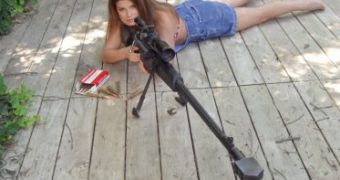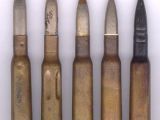What is an armor-piercing bullet? Of course, a bullet that (almost) no armor or bulletproof vest can withstand. And by the way, bulletproof vests don't exist. What you see in the movies are bullet-resistant vests, a more accurate term for modern body armor.
The degree of resistance of an armor depends on the materials used, how they are layered, the caliber and make of the bullet, the powder load of the cartridge (which affects its speed), and other factors, such as weather.
When facing such an armor, the only thing you can modify in order to penetrate it is the bullet, since manufacturers are involved in a continuous battle: the toughest armor against the toughest armor-piercing rounds.
APS, or Armor Piercing Shell, is a type of ammunition designed to penetrate armor and detonate. They are generally used against body armor, vehicle armor, concrete, tanks and other defenses, depending on the caliber of the firearms.
Shells designed for this purpose had a greatly strengthened case with a specially hardened and shaped nose and a much smaller bursting charge. Some smaller caliber AP shells have an inert filling, or incendiary charge in place of the HE bursting charge.
The most widely used armor piercing bullets in the world are made of a hardened steel, tungsten-carbide, or depleted uranium penetrator enclosed within a softer material, such as copper or aluminum. The depleted uranium rounds, for instance, take advantage of their high-density material, designed to retain its shape and carry the maximum possible amount of energy as deep as possible into the target.
The armor piercing bullets fired from rifles are strengthened with a copper or cupro-nickel jacket, much like the jacket that surrounds lead in a conventional projectile, a jacket which is destroyed upon impact to allow the penetrating charge to continue its movement through the targeted substance.
One of the most famous types of APBs used in the past were the teflon-coated bullets. Contrary to popular belief, the teflon coating did not in itself help the bullet penetrate deeper, instead it was meant to help reduce the wear on the barrel as a result of firing hardened projectiles. The strange fact is that this misconception even produced laws that lead to the restricted use of these bullets, eventually leading to their extinction.
An interesting fact, that most people don't know about, is that it's not enough to have the armor-piercing bullet, you must also have a modified barrel, in order to take advantage of the bullet's ability.
The famous example of such a blunder was the assassination attempt on US President Ronald Reagan that took place on March 30, 1981. Then, the shooter used an armor piercing bullet with a normal revolver, which actually deprived the bullet of its ability, contributing to the bullet missing the heart by less than one inch and piercing his left lung instead, which likely spared his life.
Since 1986, according to Title 18, U.S. Code Section 922, no one may manufacture or import armor-piercing ammunition for civilian use, nor may manufacturers or importers sell or deliver such ammunition to civilians without the permission of the attorney general.

 14 DAY TRIAL //
14 DAY TRIAL // 
